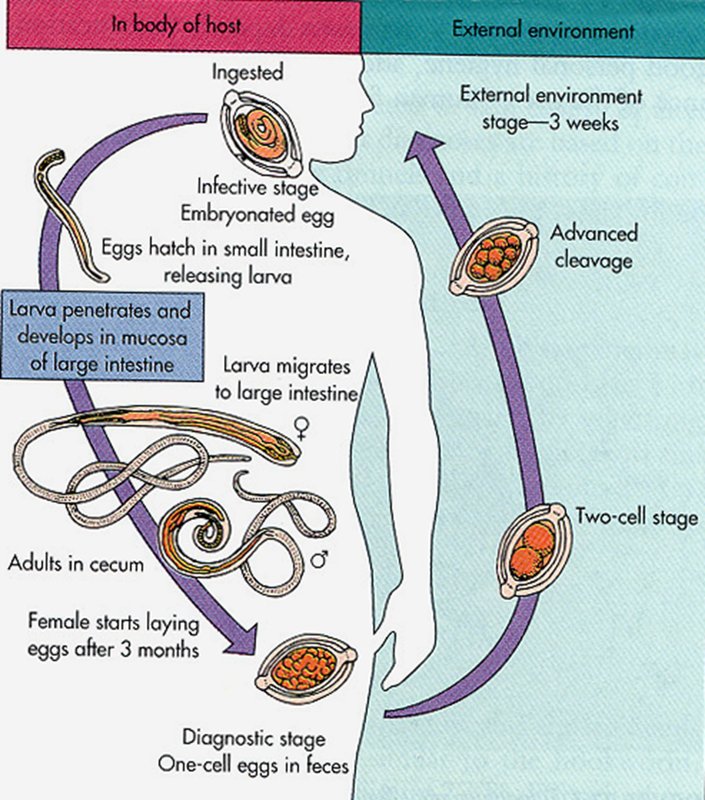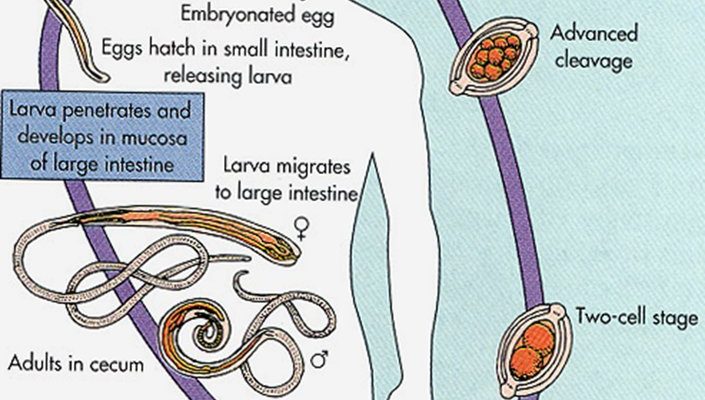
Imagine a bustling city where each resident has a unique job, contributing to the community’s overall health. Similarly, whipworms interact with various microorganisms, bacteria, and other tiny organisms, playing key roles in their hosts’ health and the environment. Understanding how whipworms fit into the bigger picture can help us appreciate the complexity of our ecosystems and the roles parasites play.
In this article, we’ll explore how whipworms interact with other microfauna in their ecosystems. We’ll break down the relationships they have with different organisms, their effects on host health, and the broader implications for both wildlife and humans. So, grab a coffee and let’s dive into the intriguing world of whipworms!
What Are Whipworms?
Whipworms, scientifically known as *Trichuris trichiura*, are intestinal parasites commonly found in mammals, especially humans. They have a long, whip-like shape, which is where they get their name. These worms can grow up to 5-8 cm long and live in the large intestine, where they attach to the intestinal wall using their thin ends.
The fascinating part? Whipworms have a complex life cycle that involves both eggs and larvae. When whipworm eggs are expelled in feces, they enter the soil, where they can develop and become infective. This makes them highly resilient and capable of surviving in various environments, especially in areas with poor sanitation.
In their host, whipworms can cause a range of health issues. While many people might not show symptoms, others can experience abdominal pain, diarrhea, and anemia. This is where their interactions with microfauna become important, as they can influence both the host’s health and the microorganisms within the gut.
The Role of Microfauna in Ecosystems
Microfauna refers to tiny organisms that are often invisible to the naked eye. These include bacteria, protozoa, and other small invertebrates. They play essential roles in ecosystems, assisting in decomposition, nutrient cycling, and maintaining soil health. Think of them as the unsung heroes of the natural world, quietly keeping everything flowing smoothly beneath our feet.
In the gastrointestinal tract, microfauna helps digest food, synthesize vitamins, and protect against harmful pathogens. When whipworms enter the picture, they can disrupt these delicate balances. For instance, a whipworm infestation can alter the composition of gut bacteria, leading to dysbiosis — an imbalance that can negatively affect the host’s overall health.
Understanding microfauna is key to grasping how whipworms interact with their environment. When we recognize that every organism is part of a larger network, we begin to see the implications of introducing parasites like whipworms into an ecosystem.
Whipworms and Gut Microbiota
Gut microbiota, or the collection of microorganisms living in the digestive tract, are vital for maintaining our health. They help break down food, produce essential compounds, and even modulate our immune systems. Whipworms, however, have a unique relationship with these gut microbes.
Research suggests that whipworms can influence the diversity and composition of gut microbiota. When whipworms are present, they might create an environment that favors certain bacteria over others. This might sound alarming, but there are some potential benefits to this relationship.
For example, whipworms can help reduce inflammation in the gut. Some studies have shown that the presence of whipworms can trigger the immune system to respond differently, potentially lowering the risk of autoimmune diseases. Here’s the thing: while whipworms might seem like a hassle, they can also play a role in promoting gut health when balanced correctly with other microfauna.
Interactions with Other Parasites
Whipworms don’t exist in isolation; they share their environment with other parasites and pathogens. These interactions can be complex and sometimes competitive. For example, when whipworms infect a host, they may compete with other intestinal parasites like tapeworms or roundworms for nutrient absorption.
Interestingly, some studies suggest that whipworms may actually have a protective effect against other parasites. They might help regulate the host’s immune response, making it less hospitable for other harmful organisms. This can create an unusual dynamic where whipworms coexist with other parasites, impacting the overall health of their host.
It’s almost like a neighborhood where different species live next to each other, sometimes competing for resources and, at other times, working together for a common goal. Understanding these relationships can shed light on how ecosystems function and adapt, particularly in environments where multiple parasites are present.
Whipworms and Soil Organisms
You might be surprised to learn that whipworms actually influence the soil where their hosts live. When whipworm eggs are excreted, they enter the soil and interact with various soil organisms, including bacteria and fungi. This can affect soil health and nutrient cycling.
Soil microorganisms play a crucial role in breaking down organic matter, returning essential nutrients to the ecosystem. When whipworms’ eggs are in the soil, they can impact the microbial community. Some studies suggest that whipworm eggs might even promote the growth of certain beneficial bacteria in the soil, which can help with plant health and growth.
Think of it like a garden: if you have the right mix of nutrients and microorganisms in the soil, your plants will thrive. However, if whipworm eggs disrupt that balance, it could lead to poorer plant health. This connection highlights the cascading effects whipworms can have on their environment beyond just their hosts.
Implications for Human Health
Understanding how whipworms interact with microfauna has important implications for human health. In areas where sanitation is poor, whipworm infections are more common, and the repercussions can be severe. Beyond the symptoms they cause, whipworms can alter gut microbiota in ways that might lead to increased susceptibility to other infections.
Interestingly, there’s a growing body of research about the potential benefits of whipworm infections in treating certain autoimmune diseases. Some scientists believe that by influencing the immune response, whipworms might help manage conditions like Crohn’s disease or ulcerative colitis. It’s a bit of a double-edged sword: while whipworms can cause health issues, they might also offer surprising therapeutic possibilities.
This highlights the need for a nuanced understanding of whipworms and their interactions within ecosystems. Rather than simply viewing them as harmful, we should consider their broader ecological roles and potential benefits.
The interactions of whipworms with other microfauna paint a complex picture of ecosystems that is as fascinating as it is intricate. From their influence on gut microbiota to their relationships with soil organisms and other parasites, whipworms demonstrate how interconnected life truly is. They act as both parasites and ecological players, showing us the delicate balance of nature.
As we continue to explore the role of whipworms in their ecosystems, we uncover valuable insights that can help us appreciate the importance of every organism, no matter how small. Ultimately, understanding these complicated relationships not only broadens our scientific knowledge but can also lead to new approaches to health and disease management. So, the next time you think about ecosystems, remember the unseen heroes like whipworms and how they weave their threads throughout the intricate tapestry of life.

